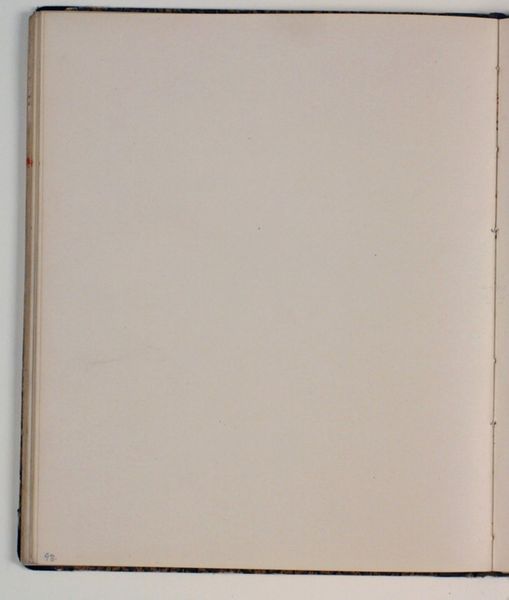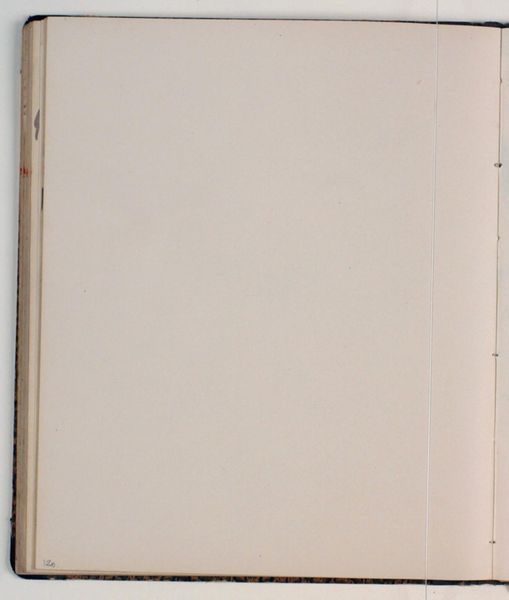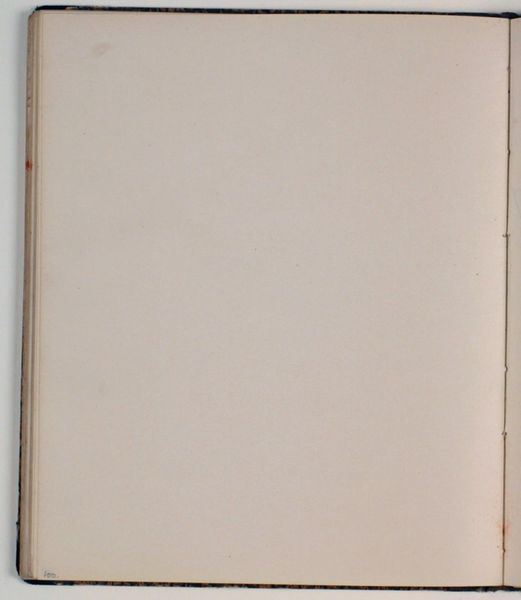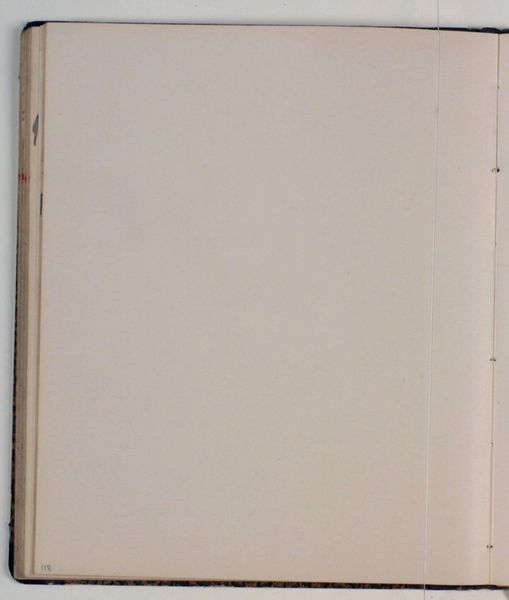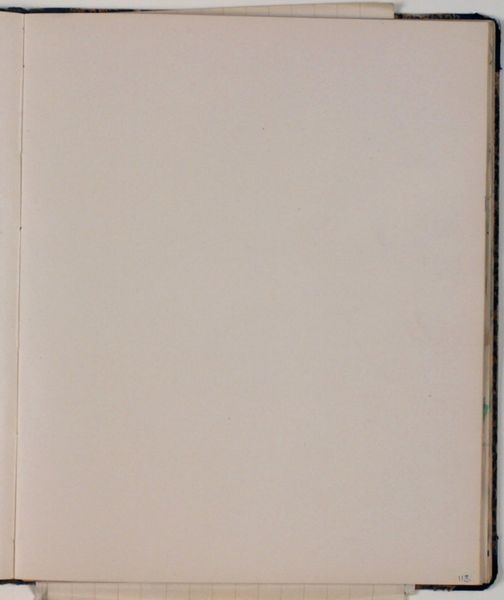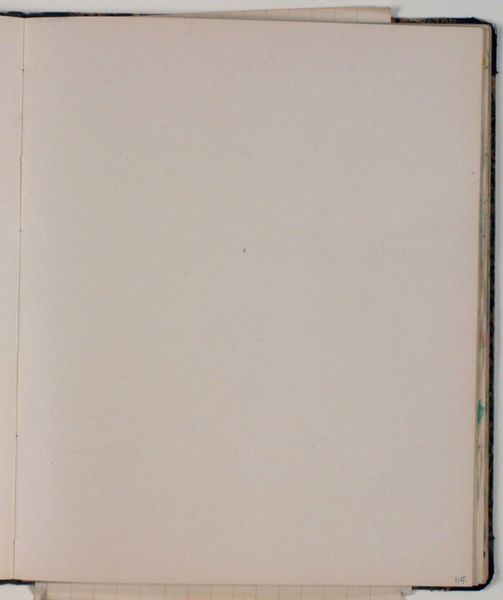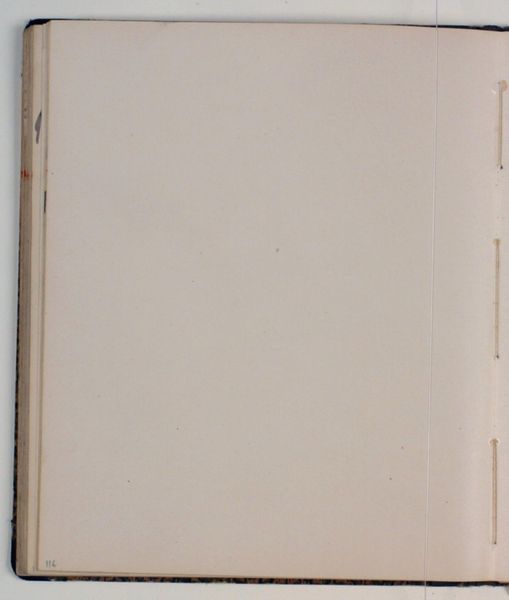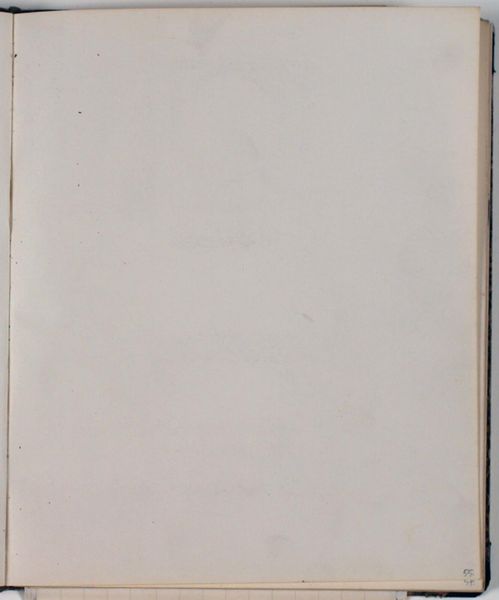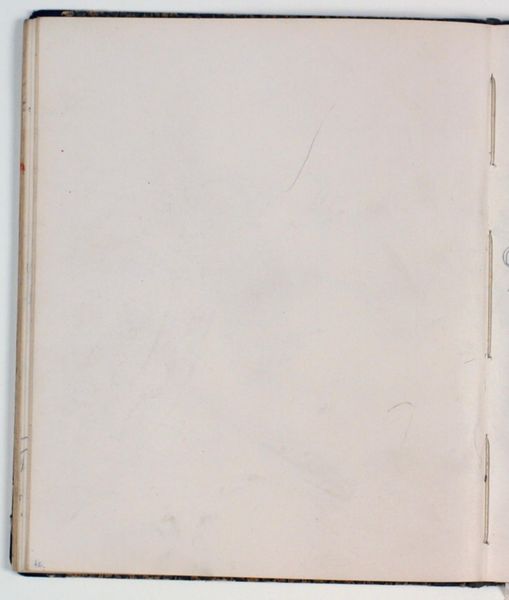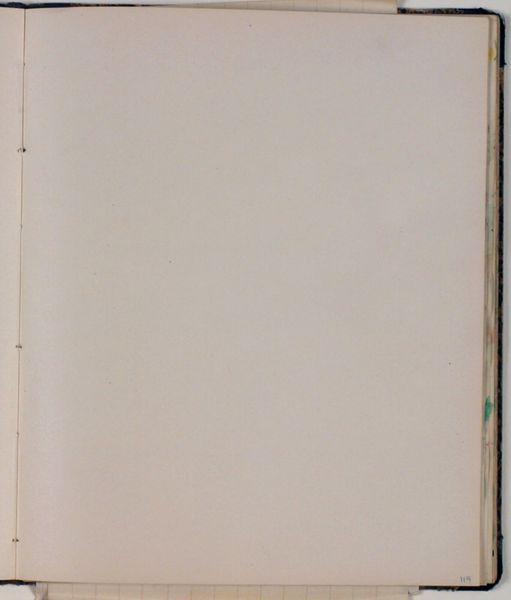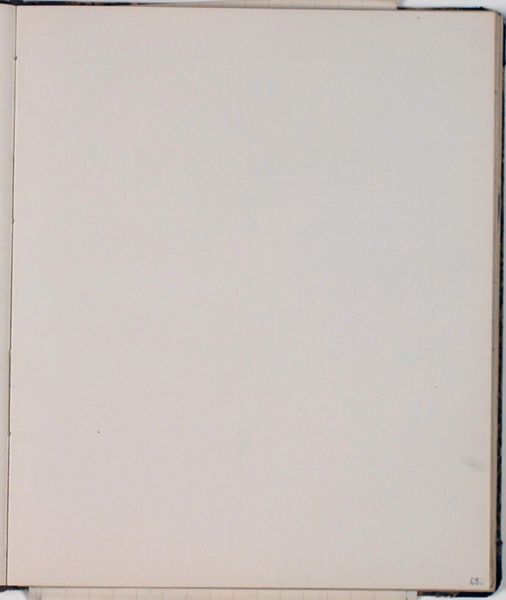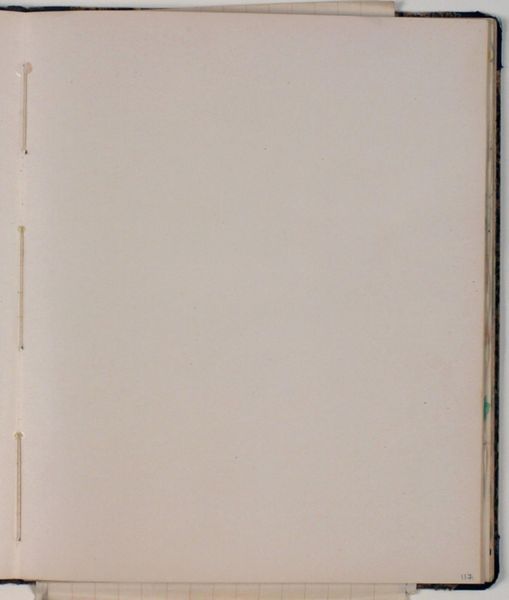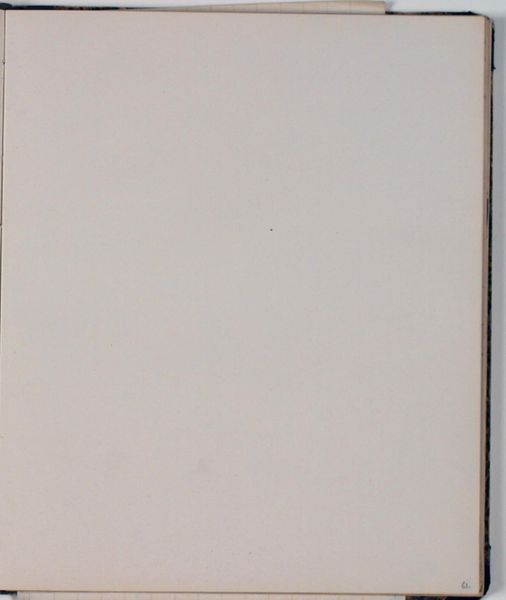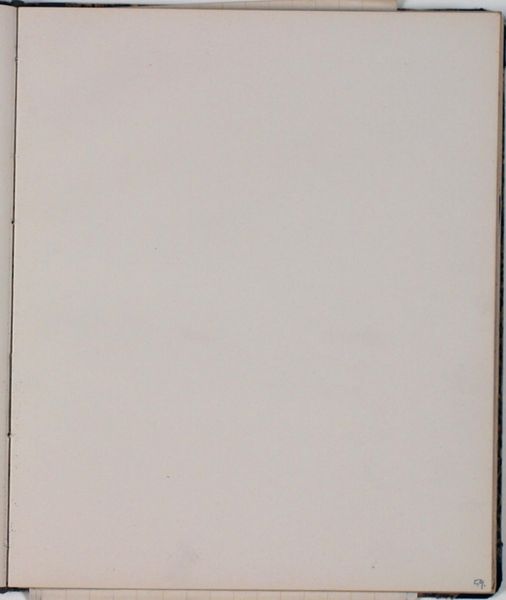
drawing, paper
#
drawing
#
toned paper
#
water colours
#
ink paper printed
#
paper
#
personal sketchbook
#
coloured pencil
#
sketchbook drawing
#
watercolour bleed
#
watercolour illustration
#
sketchbook art
#
watercolor
Dimensions: 226 mm (height) x 185 mm (width) x 112 mm (depth) (monteringsmaal), 221 mm (height) x 184 mm (width) (bladmaal)
Editor: Here we have "Blank" by Niels Larsen Stevns, dating from between 1930 and 1936. It seems to be a page from a sketchbook, using materials like watercolour and coloured pencil on paper. The blankness is a bit unnerving, almost like a challenge. What do you see in this seemingly empty page? Curator: Well, precisely that 'blankness' is rich with possibilities when viewed through a materialist lens. Look at the paper itself - likely mass-produced, its texture, its slight toning. These characteristics speak to a particular industrial moment. Then consider the watercolors and pencils, the means of applying color, even when absent. How do those specific tools, available to the artist at that time, affect what they were able to produce? It's about access, it's about the labor implied, the material reality beneath the 'blank' surface. Editor: So, it’s less about the absent image and more about what went *into* enabling its potential creation? The material context, the social and economic factors around production. Curator: Exactly. We often valorize the "artwork," but here we can reflect on what the materials tell us. What kind of paper was affordable? How did Stevns, and other artists, negotiate those economic limitations and material availability in the 1930s? The ‘blankness’ forces us to consider the usually unseen processes of art-making, the labor and choices that go into every decision, visible or invisible, like the absence of colour itself being a very strong decision. Editor: That completely shifts how I see it. It’s like archaeology of a potential image, revealing the foundations, not the finished building. It is more interesting than I first thought. Curator: Indeed. It prompts us to ask who had access to create "finished buildings," and what materials determined their possibilities. Always question the assumed narrative, and always look to the materials that construct it!
Comments
No comments
Be the first to comment and join the conversation on the ultimate creative platform.
